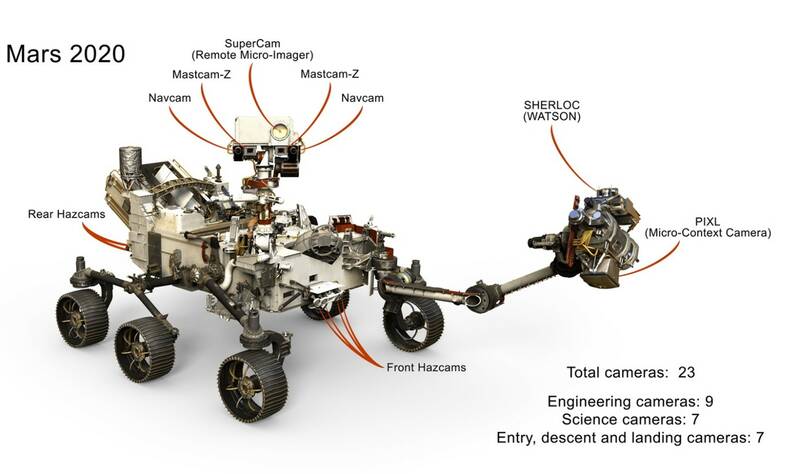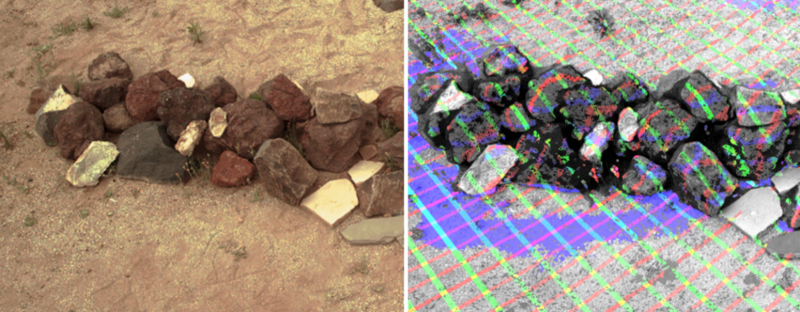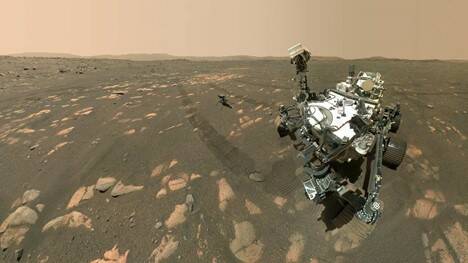Where No One Has Gone Before: Cameras in Space
The scientific and space exploration communities have had much to celebrate in recent weeks, as the National Aeronautics and Space Administration (NASA) Perseverance Mars rover landed successfully on the red planet on February 18 and began sending back remarkable images. A tremendous amount of technology, engineering innovation, and dedication went into the Mars 2020 mission and getting Perseverance to its destination successfully. But during its landing and now that it has landed, the center of attention has shifted to the on-board cameras and imaging systems that are giving the world a rover’s-eye view of the planetary surface and helping to investigate key scientific questions.

Detail on the locations of some of the Perseverance cameras. (Image: NASA)
Covered in Cameras
There are a total of 23 cameras on Perseverance, including seven dedicated to capturing entry, descent, and landing (EDL). Nine cameras are designed for surface operations, and the remaining seven are for scientific imaging.
EDL
There are five types of EDL documentation cameras: three Parachute Uplook Cameras (PUCs), the Descent stage Downlook Camera (DDC), the Rover Uplook Camera (RUC), the Rover Descent Camera (RDC), and the Lander Vision System (LVS) Camera (LCAM).
“The PUCs are mounted on the parachute support structure and will acquire video of the parachute deployment event as part of a system to characterize parachute performance. The DDC is attached to the descent stage and pointed downward, it will characterize vehicle dynamics by capturing video of the rover as it descends from the skycrane.
The rover-mounted RUC, attached to the rover and looking upward, will capture similar video of the skycrane from the vantage point of the rover and will also acquire video of the descent stage flyaway event. The RDC, attached to the rover and looking downward, will document plume dynamics by imaging the Martian surface before, during, and after rover touchdown.
The LCAM, mounted to the bottom of the rover chassis and pointed downward, will acquire images during the parachute descent phase of EDL as input to an onboard map localization by the Lander Vision System (LVS). The rover also carries a microphone, mounted externally on the rover chassis, to capture acoustic signatures during and after EDL.”1
Surface Operations
Now safely landed on Mars, a suite of surface operation cameras enables engineers to navigate the rover remotely across the terrain. Three Navigation cameras (Navcams) and six Hazard Avoidance Cameras (Hazcams) can take color stereo images of the surface.

Navcam shows a pile of rocks taken from a distance of about 15 meters in the "Mars Yard" testing area at Jet Propulsion Laboratory (JPL). "The pictures illustrate one way the camera data can be used to reveal the contours of a target from a distance. Such measurements give the rover and its team the knowledge they need to plan precise travel and arm movements." 2 (Image: NASA)
The rover also carries an entirely new type of camera, the CacheCam, that looks directly down into the sample cache (where materials such as soil and rocks are collected) as they are being prepared for sealing. CacheCam enables scientists to watch over the sampling process and keeps a record of each sample collected.
Scientific Cameras
The primary objective of the Mars 2020 mission is to address high-priority scientific goals, including the search for signs of past microbial life and investigating the potential for future human habitation. For example, mission tasks include “testing a method for producing oxygen from the Martian atmosphere, identifying other resources (subsurface water), improving landing techniques, and characterizing weather, dust, and other potential environmental conditions that could affect future astronauts living and working on Mars.”3 There are seven cameras on the rover dedicated these scientific investigations.
- Mastcam-Z is a pair of cameras (to closely replicate human stereo vision) that take three- dimensional color images and video with powerful zoom capabilities.
- SuperCam fires a laser at a target (such as a rock formation) and uses a Remote Microscopic Imager (RMI) and spectrometer to analyze its chemical composition.
- PIXL (Planetary Instrument for X-ray Lithochemistry) instrument uses X-ray fluorescence and a Micro Context Camera (MCC) to examine targets as small as a grain of table salt.
- SHERLOC (Scanning Habitable Environments with Raman & Luminescence for Organics & Chemicals) instrument combines a spectrometer and a laser, but also uses an integrated context camera, the Advanced Context Imager (ACI).
- WATSON (Wide Angle Topographic Sensor for Operations and eNgineering) camera is mounted at the end of a robot arm. It can take a broad view of the landscape or examine “fine-scale textures and structures in Martian rocks and the rocky debris and dust that cover so much of the Martian surface. These capabilities mean WATSON not only supports SHERLOC, but also helps identify targets of interest for the other rover instruments. Since WATSON can be moved around by the robotic arm, it also provides images of instruments and rover parts."4
- MEDA SkyCam acquires images of the Martian sky as part of a larger atmospheric science instrument package.5

A Perseverance “selfie” on Mars taken using the onboard WATSON and SHERLOC cameras. As many as 62 individual images were stitched together to get this selfie of the rover with its small robotic helicopter Ingenuity, taken at Jezero Crater. The Ingenuity helicopter can be seen roughly 4 m from the rover. (Image: NASA)
A Legacy of Innovation
Back here on planet Earth, Radiant is among the many companies and research entities engaged in pushing camera technology, optics, and imaging system capabilities forward. We are continually developing innovative new hardware and software solutions that enable ever-more precise capture, measurement, and analysis of light sources, display devices, surfaces, glass and transparent materials, and more. For example:
- Radiant’s award-winning NIR Intensity Lens measures near-infrared LED and laser emissions that are used for various identification, monitoring, 3D mapping, and depth-sensing applications.
- A patented method for accurately measuring and correcting pixel- and-subpixel luminance and chromaticity to ensure uniformity of OLED and microLED displays.
- Our award-winning AR/VR Lens that has a unique optical design to replicate the viewpoint of a human user’s eye within a headset or pair of smartglasses.
- Visual Inspection Pack (VIP™), part of the TrueTest™ Software family, which combines the power of photometric light and color measurement with machine vision capabilities enabling manufacturers to perform registration and inspection of lit icons and symbols.

Radiant’s innovative solutions include, left to right: the AR/VR Lens, ProMetric® Y-series Imaging Photometer with Microscope Lens attachment for measuring subpixel arrays, and the NIR Intensity Lens system with ProMetric Y16 Radiometer.
And if NASA needs a high-resolution, low noise imaging photometer or colorimeter for some future space mission, they only need to ask.
CITATIONS
- Maki, J., Gruel D., et al. “The Mars 2020 Engineering Cameras and Microphone on the Perseverance Rover: A Next-Generation Imaging System for Mars Exploration”, Space Science Reviews 216(137), November 24, 2020. DOI: https://doi.org/10.1007/s11214-020-00765-9
- “The Cameras on the Mars 2020 Perseverance Rover.” NASA, https://mars.nasa.gov/mars2020/spacecraft/rover/cameras/. (Retrieved 4/15/2021).
- “Looking for Signs of Past Microbial Life”, Teledyne. (Retrieved April 15, 2021).
- “The Cameras on the Mars 2020 Perseverance Rover.” NASA, https://mars.nasa.gov/mars2020/spacecraft/rover/cameras/. (Retrieved 4/15/2021).
- “NASA Shares Perseverance Rover’s Selfie With Its Ingenuity Helicopter on Mars”, Firstpost: Tech2, Thursday, April 15, 2020.
Join Mailing List
Stay up to date on our latest products, blog content, and events.
Join our Mailing List
